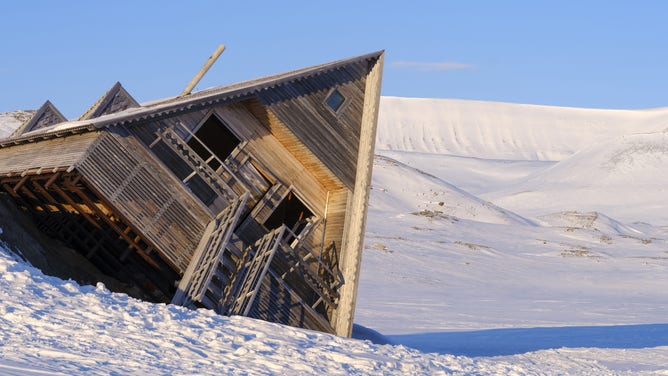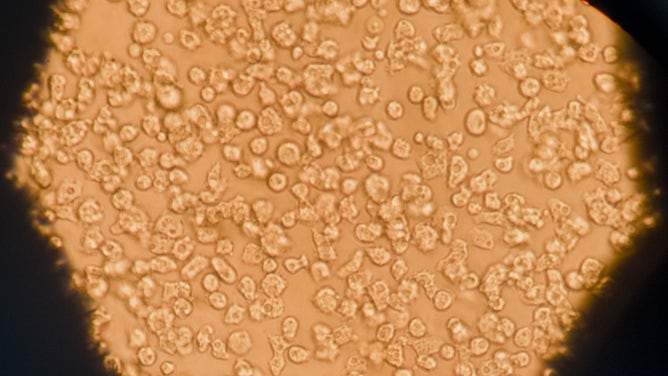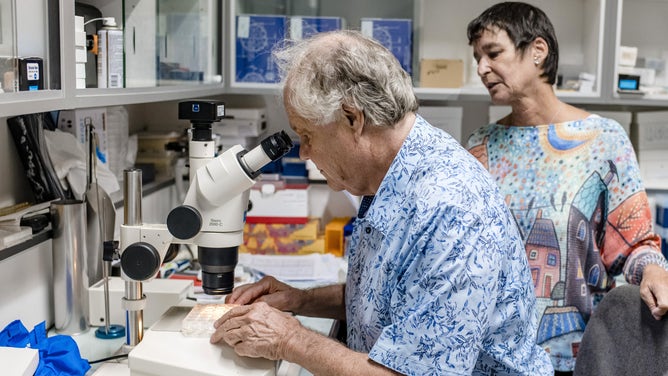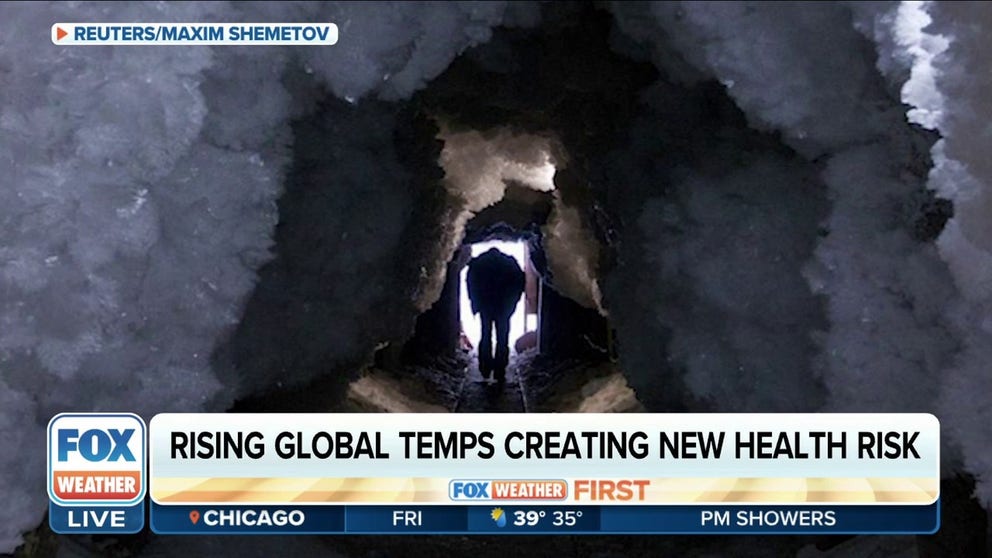Ancient ‘zombie’ viruses may threaten humans due to global warming, scientists say
Ancient amoeba viruses are already being released each summer as permafrost thaws.
Thawing ice could release ancient "zombie viruses"
Viruses that became trapped in frozen earth thousands of years ago would be released as rising temperatures cause the soil to thaw, scientists say. Environmental Virologist Jean-Michel Calverie joins FOX Weather to explain.
Viruses that became trapped in frozen earth thousands of years ago would be released as rising temperatures cause the soil to thaw, scientists say.
Microbes over 400,000 years old have been found in frozen earth, known as permafrost, as it has thawed, according to NASA. That means that these ancient bacteria and viruses could be old enough to have coexisted with Neanderthals, which were our closest extinct human relative.
Since the time of the Neanderthals, the permafrost that kept ancient viruses trapped has begun to melt and become unstable, according to Jean-Michel Claverie, an emeritus professor at the School of Medicine of Aix-Marseille University in the South of France.

A modern hut in Arctic Norway, damaged due to melting permafrost underneath.
(Martin Zwick / REDA&CO / Universal Images Group / Getty Images)
Claverie and his team of researchers were able to isolate two viruses retrieved from 30,000-year-old permafrost. They published their results in 2014 and 2015.
CITY-SIZED SINKHOLES REVEALED ON ARCTIC SEAFLOOR AS ANCIENT PERMAFROST THAWS
The team discovered that the ancient viruses had remained infectious, as their experiments showed their ability to infect amoebas.
"This is when the popular notion of a ‘zombie’ virus was born," Claverie said. He added that ancient amoeba viruses are already being released each summer as permafrost thaws.

A sample viewed in a microscope in a laboratory at the Information Gnomic and Structural Center (IGS) of Aix-Marseille University in Marseille, France, on Sept. 25, 2023.
(Jeremy Suykur / Bloomberg / Getty Images)
Claverie's team resurrected seven more amoeba viruses from permafrost, which had been trapped up to nearly 50,000 years ago.
RISK OF MOSQUITO-BORNE DISEASES INCREASING ACROSS EUROPE, HEALTH OFFICIALS WARN
Regarding ancient viruses infecting humans, Claverie cited other studies that found genomic traces of herpesviruses, poxviruses and Asfarviruses in thawed permafrost.

Husband and wife virologists Jean-Michel Claverie, left, and Chantal Abergel in a laboratory at the Information Gnomic and Structural Center (IGS) of Aix-Marseille University in Marseille, France, on Sept. 25, 2023. Last year, Claverie's team published research showing they'd extracted multiple ancient viruses from the Siberian permafrost, all of which remained infectious.
(Jeremy Suykur / Bloomberg / Getty Images)
"The scenario of an unknown virus once infecting Neanderthals coming back at us, although unlikely, has become a real possibility," he noted.
"The risk is a combination of hazard and exposure over time," he added during an interview with FOX Weather Friday. "The viruses are released when the permafrost is melting, however if they don’t find a suitable host to infect within hours of release, the surface conditions will destroy them."
ARCTIC WARMING 4 TIMES FASTER THAN THE REST OF THE WORLD
But in addition to releasing once-trapped viruses, Claverie said the rising temperatures that are causing permafrost to thaw are also making what had been regions inhospitable to many humans now more accessible. This is particularly the case along the northern Arctic Ocean coastline of Siberia.

Satellite image of Omulyakhskaya and Khromskaya Bays lie along the northern Siberian coast. The land around the bays is dotted with bright teal lakes, which result from water released by thawing permafrost.
(NASA Earth Observatory / NASA)
"So the main factor is the risk increases as the human presence increases in the arctic regions because of permafrost melting and of global warming, basically," he said.
Claverie noted that the amount of time the ancient viruses from permafrost would remain infectious is unknown, as they become exposed to factors such as oxygen, heat and UV light. The likelihood of encountering and infecting a host is also difficult to determine.
"But it is already clear that the risk associated to the 'zombie viruses’ scenario is bound to increase in the context of global warming as permafrost thawing keeps accelerating, and as more people populate the Arctic in the wake of industrial ventures," he said.
